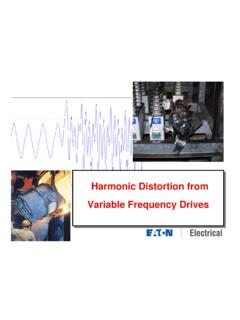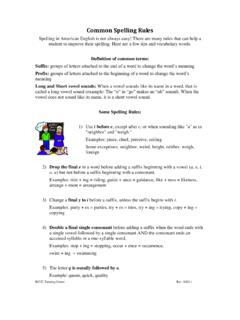Transcription of Agar Cell Diffusion - Exploratorium
1 4th NGSS STEM Conference MAKING SCIENCE COUNT. Integrating Math into an NGSS Classroom January 20, 2017 | Pier 15, San Francisco, CA. agar Cell Diffusion Use cubes of agar to investigate how cell size impacts Diffusion . All biological cells require the transport of materials across the plasma membrane into and out of the cell. By infusing cubes of agar with a pH indicator, and then soaking the treated cubes in vinegar, you can model how Diffusion occurs in cells . Then, by observing cubes of different sizes, you can discover why larger cells might need extra help to transport materials. Tools and Materials agar - agar powder Digital scale Graduated cylinder Water Whisk or fork Microwaveable bowl or container at least 500ml in volume Microwave (not shown). Hot pad or oven mitt Heat-safe surface pH indicator such as bromothymol blue OR phenolphthalein 4th NGSS STEM Conference MAKING SCIENCE COUNT. Integrating Math into an NGSS Classroom January 20, 2017 | Pier 15, San Francisco, CA.
2 Ammonia Small glass baking pan or cube-shaped silicone ice-cube molds Clear plastic metric ruler Sharp knife Clear container for immersing jelly cubes Vinegar Calculator Pencil and notepaper Spoon White paper or plate Timers Assembly 1. Measure out g of agar - agar and 200 ml water. Mix them together with a whisk or fork in a large microwaveable bowl. 2. Heat the solution in the microwave on high for 30 seconds. Remove to a heat-safe surface using a hot pad or oven mitts, stir, and return to the microwave for 30 seconds. Repeat this process until the mix- ture boils. (Keep your eye on it, as it can boil over very easily!) When done, remove the container and set it on a trivet or other heat-safe surface. 3. Choose ONE pH indicator to work with (either bromothymol blue or phenolphthalein) and add a few drops of it to the agar solution. If you're using bromothymol blue, add enough indicator so that the mixture turns blue. If it has a greenish hue, add ammonia one drop at a time until it is blue (see photo below).
3 If you're using phenolphthalein, add enough indicator so that the mixture turns pale pink. Add ammonia drop by drop until the mixture turns (and remains) bright pink (see photo below). 4th NGSS STEM Conference MAKING SCIENCE COUNT. Integrating Math into an NGSS Classroom January 20, 2017 | Pier 15, San Francisco, CA. 4. Carefully pour the agar solution into silicone ice-cube molds or a small glass baking pan. Make sure the agar block(s) will be at least 3 cm deep when they solidify. If you don't have enough solution, make more using the ratio of g agar - agar powder to 100 ml water. 5. Let the agar cool until it solidifies (an hour is usually sufficient). Remove the agar blocks from the molds or cut in the pan with a sharp knife to obtain two sets of cubes of three sizes: 1 x 1 x 1 cm, 2 x 2 x 2 cm, and 3 x 3 x 3 cm. If you're using bromothymol blue, you should have two sets of blue cubes. If you're using phenolphthalein, you should have two sets of pink cubes.
4 The sets need to match in order to compare the color change later on in the Snack. To Do and Notice Place a few millileters of the pH indicator (either bromothymol blue or phenolphthalein) into a small container. Using a dropper, add a few drops of vinegar. What do you notice? As an acid, vinegar has a large number of hydrogen ions. When the hydrogen ions come into contact with the pH indicator, the vinegar changes color. Fill a clear container with vinegar to a 3-cm depth. Place one agar cube of each size in the vinegar, making sure the blocks are submerged. The untreated blocks (one of each size) will be used for comparison. What do you think will happen to each cube? 4th NGSS STEM Conference MAKING SCIENCE COUNT. Integrating Math into an NGSS Classroom January 20, 2017 | Pier 15, San Francisco, CA. Determine the surface area and volume of each cube. To find the surface area, multiply the length of a side of a cube by the width of the side of a cube. This will give you the area of one face of the cube.
5 Multiply this number by 6 (the number of faces on a cube) to determine the total surface area. To find the volume, multiply the length of the cube by its width by its height. Then determine the surface-area-to-volume ratios by dividing the surface area by the volume for each cube. How will you know if hydrogen ions are moving into the cube? How long do you think it will take the hydrogen ions to diffuse fully into each of the cubes? Why? How will you be able to tell when the vinegar has fully pene- trated the cube? After five minutes, remove the cubes from the vinegar with a plastic spoon and place them on white paper or on a white plate. Compare the treated cubes to the untreated cubes and observe any color changes. How much vinegar has been absorbed by each treated cube? One way to measure this is to calculate the percentage of the volume of the cube that has been penetrated by the vinegar. (Hint: It may be easier to first consider the volume that has not been penetrated by the vinegar the portion that has not yet changed color.)
6 Do you want to adjust any of your predictions for the Diffusion times? What are your new predictions? Carefully return all of the treated cubes to the vinegar. Continue checking the vinegar-soaked cubes every five minutes by removing them to determine the percentage of the cube that has been penetrated by the vinegar. Continue this process until the vinegar has fully penetrated the cubes. Make a note of the time when this oc- curs. What do you notice about the percentage of penetration for each of the cubes at the different time intervals? What relationships do you notice between surface area, volume, surface-area-to-volume ratio, and percentage penetration? What does this say about Diffusion as an object gets larger? What's Going On? Biological cells can only survive if materials can move in and out of them. In this Snack, you used cubes of agar to visualize how Diffusion changes depending on the size of the object taking up the material. Diffusion occurs when molecules in an area of higher concentration move to an area of lower concentration.
7 As hydrogen ions from the vinegar move into the agar cube, the color of the cube changes, allowing you to see how far they have diffused. While random molecular motion will cause individual molecules and ions to contin- ue moving back and forth between the cube and the vinegar solution, the overall concentrations will remain in equilibrium, with equal concentrations inside and outside the agar cube. 4th NGSS STEM Conference MAKING SCIENCE COUNT. Integrating Math into an NGSS Classroom January 20, 2017 | Pier 15, San Francisco, CA. How did you find the percentage of the cube that was penetrated by the hydrogen ions at the various time intervals? One way to do this is to start with the volume of the cube that has not been penetrated in other words, the part in the center that has not yet changed color. To determine the volume of this inner cube, measure the length of this inner cube and multiply it by the width and height. Subtract this from the original volume of the cube and you obtain the volume of the cube that has been penetrated.
8 By dividing this number by the original volume and multiplying by 100%, you can determine the percentage penetration for each cube. You may have noticed that the bigger the vinegar-soaked cube gets, the time it takes for additional vinegar to diffuse into the cube also increases but not in a linear fashion. In other words, if the cube dimensions are doubled, the time it takes for the hydrogen ions to completely diffuse in more than doubles. When you triple the size, the time to diffuse MUCH more than triples. Why would this happen? As the size of an object increases, the volume also increases, but by more than you might think. For example, when the cube doubles from a length of 1 cm to a length of 2 cm, the surface area increases by a factor of four, going from 6 cm2 (1 cm x 1 cm x 6 sides) to 24 cm2 (2 cm x 2 cm x 6 sides). The volume, though, in- creases by a factor of eight, increasing from 1 cm3 (1 cm x 1 cm x 1 cm) to 8 cm3 (2 cm x 2 cm x 2 cm). Because the volume is increasing by a greater factor than the surface area, the surface-area-to-volume ratio decreases.
9 As the cube size increases, the surface-area-to-volume ratio decreases (click to enlarge the table below). The vinegar can only enter the cube through its surface, so as that ratio decreases, the time it takes for Diffusion to occur throughout the whole volume increases significantly. Cube Side Surface-Area- Surface Area Volume Length To-Volume Ratio 1 cm 6 cm2 1 cm3 6 cm-1. 2 cm 24 cm2 8 cm3 3 cm-1. 3 cm 54 cm2 27 cm3 2 cm-1. 4th NGSS STEM Conference MAKING SCIENCE COUNT. Integrating Math into an NGSS Classroom January 20, 2017 | Pier 15, San Francisco, CA. Anything that comes into a cell (such as oxygen and food) or goes out of it (such as waste) must travel across the cell membrane. As cells grow larger, the ratio of surface area to volume decreases dramatically, just like in your agar cubes. Larger cells must still transport materials across their membranes, but have a larger volume to supply and a proportionately smaller surface area through which to do so.
10 Bacterial cells are fairly small and have a comparatively larger surface-area-to-volume ratio. Eukaryotic cells , such as those in plants and animals, are much larger, but have additional structures to help them conduct the required amount of transport across membranes. A series of membrane-bound structures continuous with the plasma membrane, such as the endoplasmic reticulum, provide additional surface area inside the cell, allowing sufficient transport to occur. Even with these strategies, though, there are upper limits to cell size. Going Further While this Snack investigates how the size of an agar cube impacts Diffusion , the shape of each cube remains consistent. Biological cells , however, come in different shapes. To see how different shapes of cells affect Diffusion rates, try various shapes of agar solids. Ice-cube molds can be found in spherical and rod shapes in addition to cubes. How does the shape impact the surface-area-to-volume ratio? Teaching Tips This Snack fits well into a series of investigations on osmosis and Diffusion .










